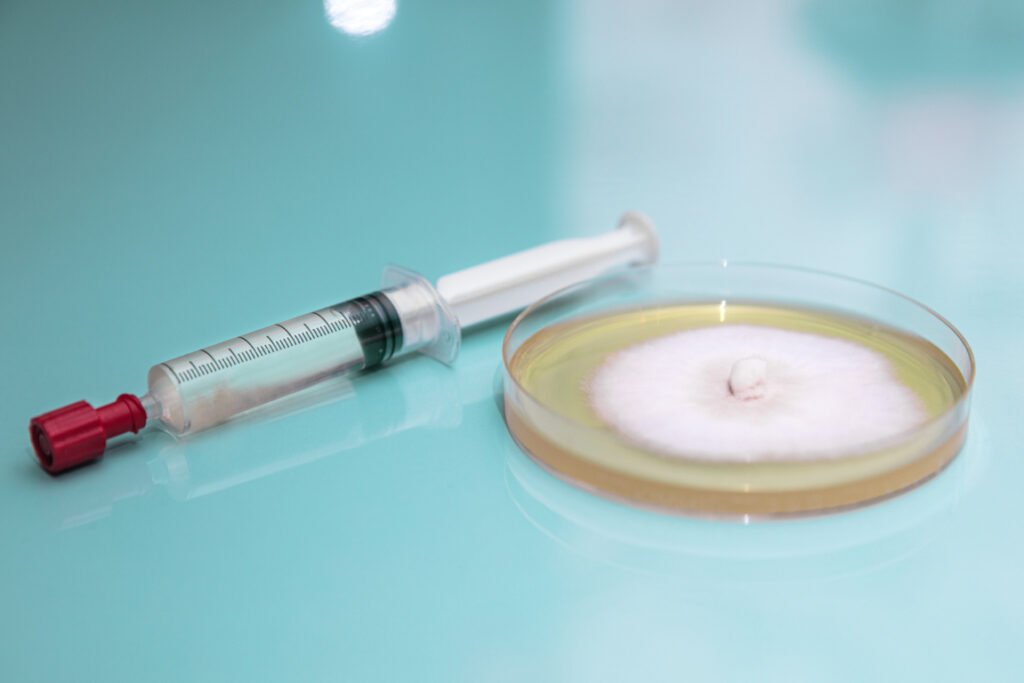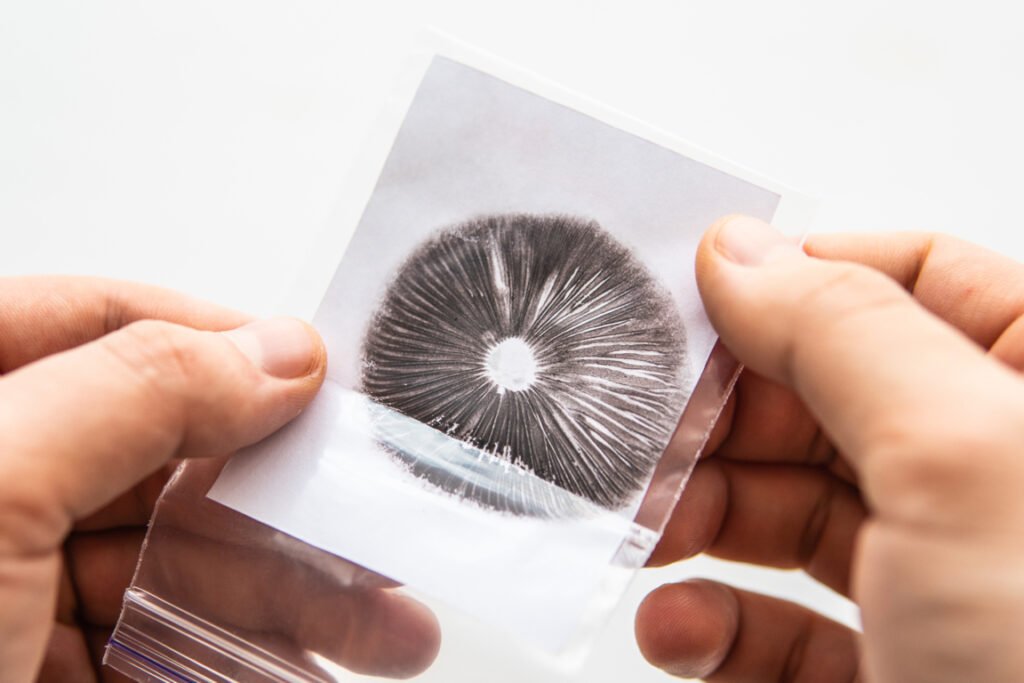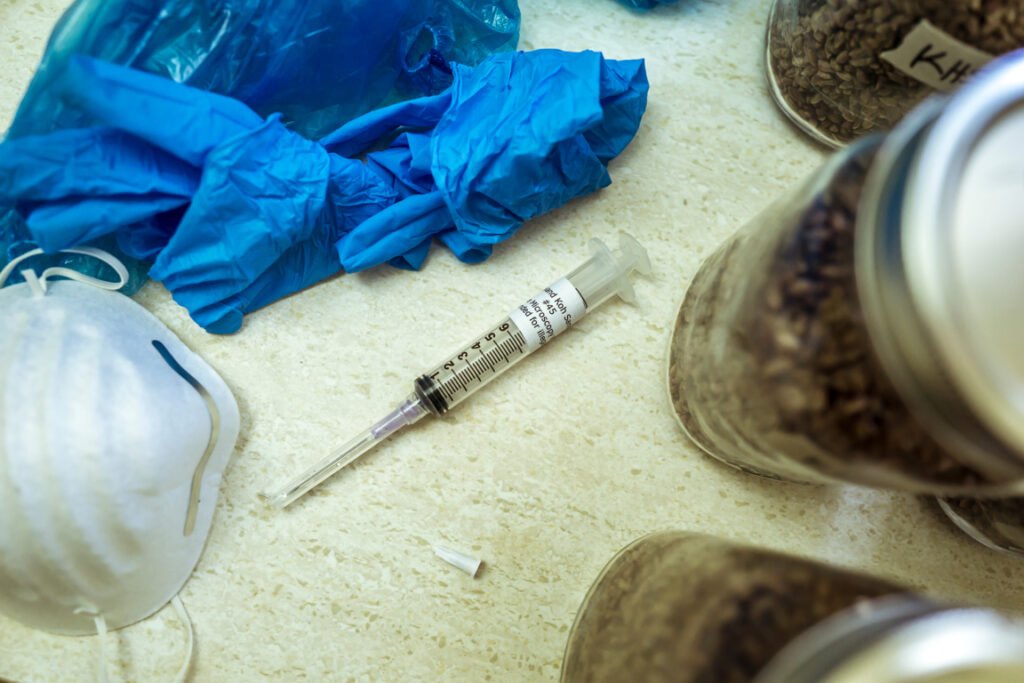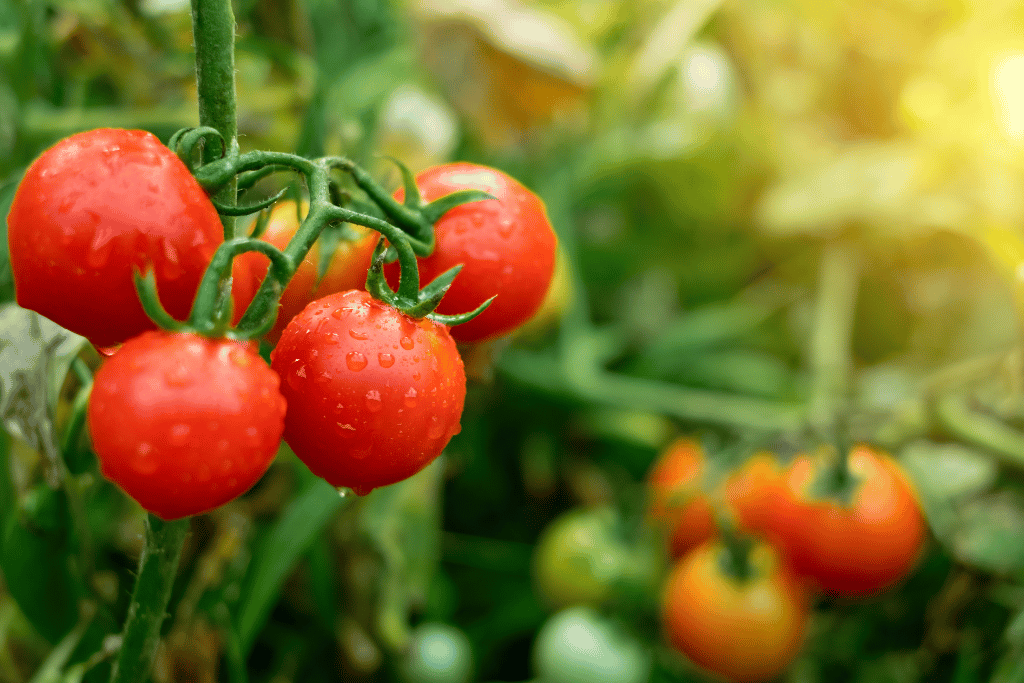
Do you have a surplus of mushroom spores? Would you like to store mushroom spores for future use?
Let me help you out.
I’ve got some simple techniques to save these babies and strategies to use them after months, years, or even decades. Provided you preserve them properly. But how to do it? How to store mushroom spores? Which is the best practice?
Let’s find answers to all your questions!
Simply put, you can store mushroom spores in two ways: by saving spore prints and by using syringes. The first option is fundamental, while the latter is a little advanced. You collect the spores as spore prints and store them immediately for a couple of years. Or, if you want to preserve spores for a prolonged period, opt for using spore syringes and keep spores in the refrigerator.
This article will explore how to store mushroom spores. Keep reading to learn more!
The Importance of Mushroom Spores
Mushrooms reproduces through their spores. Each spore measures around 4 to 20 microns, and each mushroom cap has billions of spores. The bottom side of a mushroom has gills, where you find the spores. To propagate your mushroom, you must extract these spores from the cap and germinate them before adding them to your substrate. This is where they multiply into vegetative fungi.
Like all organic substances, mushrooms decay. So, we collect the spores from the parent mushrooms to continue the propagation cycle. However, proper storing of these spores is vital to secure their viability.
Let’s find out how to collect and store mushroom spores.
How to Store Mushroom Spores
The spores are the reproductive cells of the mushroom. One cap of a mushroom has billions of spores. Finding the best way to save and store these spores can help you manage your future yields and requirements.
How to harvest and store mushroom spores?
There are two ways,
- Spore prints, or
- Spore syringes
The latter is the most common storage technique. It is more convenient and common for its ease of transfer and safety from contamination.
Spore Prints

The powdery residues from the mushroom gills are the spores. You can collect these as an image or a print of their arrangement and colors on a flat surface. The print thus collected showing the color, and the arrangement of spores is the spore print.
The size, shape, and color of spore prints depend on the mushroom caps. The pattern of the spore prints follows the same as that of their parent mushroom caps. Small caps have small prints, while bigger ones have larger spore prints. Each spore print has billions of spores. Typically you can make five to ten 10ml syringes from a single spore print.
The color of the spore print relies on the mushroom variety. It varies from white, brown, purple, or black. The denser the spore count darker will be the color.
Use the following steps to make a spore print:
- Take your desired mushroom and cut the stem away
- Place the mushroom cap over a sterile surface like glass, tin foil, paper index cards, or plastic dishes. Make sure the gills side is at the bottom
- Put a few drops of water on the mushroom cap to loosen the spores
- Cover the cap with a sterile glass jar to prevent contamination
- Set them aside for 24 hours
- Gently remove the jar and the mushroom caps
- Collect the spore print and store
There are endless mediums to harvest the spores. However, certain mediums, like tin foil, make it easier to transfer them.
Once collected, properly stored spore prints can last for decades. These prints are great for making syringes and studying spores under microscopes. Ensure you put them in an air-tight container and place them in a dark, cool place.
How to Store Mushroom Spore Prints?
Thankfully, storing mushroom spore prints is very simple.
Like storing any organic material, you must store mushroom spore prints in a cool, dry space. Moisture can activate these dormant spores and germinate them. This will reduce their shelf life.
Another problem while storing mushroom spore prints is contamination. Air has many microscopic particles like dust, hairs, pollens, and other spores. These particles can contaminate your spore prints.
It’s always best to have a clean counter while you work with spores. You cannot risk contamination. I usually clean my counter, jars, knife, and everything over my counter using isopropyl alcohol. You can read more about how to use isopropyl alcohol here.
After you have made the spore print, as I have mentioned above, it’s time to collect and store them. Here is my method. I prefer tin foil over other materials to collect my spores. Feel free to use your alternatives.
- Once the spores disperse, lift the jars covering the spore prints and mushroom
- Once the spores disperse, lift the jars covering the spore prints and mushroom
- Wipe the zip lock bag with isopropyl alcohol to avoid contamination
- Once it dries, carefully insert the tin foil into the sterile zip lock bag. Never shove or press the spores. This can damage the spore prints
- Avoid air pockets when zipping the zip lock bag
- Now keep it in a cool, dry, and dark space
Where Should You Keep Spore Prints?
There are several ways to store spore prints. The most common method is using simple zip-lock bags or air-tight containers. Check for moisture before storing them.
I prefer to manage spore prints by filing them. The zip-locked spore print goes into my spores-specific file drawer. Here I arrange my spore print files.
By the way, never forget to label your spore before storing them. This little organization tip can save you a hell lot of time in the future.
Spore Syringes

These are sterile syringes containing liquid with suspended spores. Making spore syringes is a simple and common way to transfer and store spores. The convenience of transferring liquid from syringes into your growing substrate makes this method efficient and sterile.
Use the following steps to make a spore syringe:
- Scrape some spores from the spore print
- Drop them into a container containing distilled water
- Mix them thoroughly
- Sterilize the syringes
- Use these syringes to pull in the mixed solution.
Opt for a sterile environment to perform these tasks to avoid contamination.
How to Store Mushroom Spore Syringes?
It’s very convenient to store spore syringes. They stay viable at room temperature and don’t require other preservation processes. Once you make the spore syringes, consider batching them by dates and labels. This helps in managing them in the long run.
Here are my step-by-step pointers on how to store mushroom spores in syringes
- Collect the spores from the spore print and make your spore syringe. You can also buy spore syringes. The latter option can be more manageable
- Secure the cap of the syringe to avoid any leaking
- Put the syringes in a zip-lock bag or an air-tight container
- Label the syringes
- Place the syringes in a dark space, like a drawer or cupboard. However, keeping them in a refrigerator can prolong their shelf life
I suggest opting for a small refrigerator only to store specimens as our regular kitchen refrigerators have too many perishable goods. These increase the chances of contamination and risk the viability of the spores. If not, keep the zip-lock bags in an air-tight container before placing them in the fridge. Double protection is always better.
Where Should You Store Spore Syringes?
You can store spore syringes in various locations. But just remember to keep them dry, cool, and dark. Always remember to keep them out of direct sunlight and moisture.
Storing syringes at a cool temperature can increase their shelf life. Even though average room temperature can preserve them, keeping them in refrigerators is always safer.
However, never freeze them. Like never. You might damage your spores and their structural integrity if you freeze them. They also become non-viable when we mix them in liquid culture for future use.
Risk Factors to Consider
In general, there are three factors to consider while preserving the mushroom spores. Along with how to store mushroom spores, it’s equally important to understand the factors influencing the preservation rate of the spores. You don’t want to save them for years only to find out they are non-viable.
Here are three aspects to consider.
Repacking Care
If there are remains of spore prints and syringes after propagation, ensure you repack them properly. Refrain from wasting an entire batch, considering you used only a fraction of it. Even though this applies to both techniques, spore syringes’ contamination risk is higher.
Please check the following while repacking:
- Sterilize the tool after use on the outside
- Tighten the syringe caps to avoid any leakage
- Don’t leave any air pockets while resealing
- Cover and refrigerate.
Remember, regardless of the technique you follow, label the used ones. Always complete the opened package and then move to the next one.
Dark and Cool Locations
Store the spore prints and syringes in dry, cool, and dark spots. Even though they adjust to slight temperature fluctuations, avoiding such changes is best. This can reduce the shelf life of the spores.
Spore prints can easily manage in any cool and dark spots, so cupboards and drawers will do. As for syringes, you can follow the same methods as the spore prints, but they are more effectively stored in refrigerators. However, refrain from placing them in the freezer, as experts suggest freezing temperature can damage the structure of the spores.
Always remember to store the spores in an opaque container. This can prevent light penetration.
Sterilization
Cleanliness is critical!
Always wipe your work surface, equipment, and tools with alcohol to prevent contamination. Avoid using soap and liquid to clean them. This can develop a soapy residue.
Also, avoid working in your kitchen near components like salt or baking soda. These elements can cause potential problems for your spores. I use isopropyl alcohol to wipe my work counter and tools.
Spore Syringe vs. Liquid Culture
Unlike spore syringes that use spores as a reproductive component, liquid culture uses living mycelium, the subsequent growth stage in the mushroom’s lifecycle. However, the shelf life of liquid culture is only up to two months.
Use the following steps to make a liquid culture:
- Take some spores and spread them across an agar plate
- Let the spore germinate into mycelium
- Blend it with a nutritious solution
- Let the mycelium get used to the new solution
- Now pull the liquid culture into sterile syringes.
The difference between spore syringes and liquid cultures is as follows:
| Spore Syringes | Liquid Cultures |
| It is a mixture of spores and distilled liquid. | It is a mixture of living mycelium and a nutritious liquid. |
| Preparing spore syringes is simple and quick. | Preparing liquid culture is elaborate and lengthy. |
| Longer shelf life. | Short shelf life. |
Opting for liquid culture is beneficial when you prefer growing gourmet mushrooms. Here, you can choose your particular variety and multiply them. Fast colonization of the living mycelium over spores is another merit of liquid culture over spore syringes.
However, most mycologists and plant enthusiasts prefer spore syringes for their longevity, usage ease, and shelf life.
Frequently Asked Questions (FAQ)
How to store mushroom spores for the long term?
You can store the spores for a long time by placing them in a dry, cool, and dark spot. Avoid moisture or light penetration to avoid any damage to the shelf life of the spores.
What happens if you touch spores?
Spores are microscopic and can cause several allergic reactions in humans. Mushrooms are fungi. Touching or inhaling fungi can cause respiratory problems like asthma, wheezing, or shortness of breath. It also irritates your nasal path and causes coughs in some people.
Can you freeze mushroom spores?
No. Avoid freezing your mushroom spores. Always keep them at either room temperature or in the refrigerator. Freezing them can alter the structural integrity of these delicate spores.
Can I reuse my spore syringes?
Yes, you can reuse your spore syringes. You may need only a few drops of the spore solution to inoculate your substrate. The remaining solution in the syringe is safe for reuse. But you might spoil them if you don’t repack or safely store them.
Can spore syringes go bad?
Yes, spores can go bad if you don’t keep them properly. Any contact with moisture, light, or contaminants can spoil them.




Pingback: How to Get Spores From Mushrooms - Back Gardener